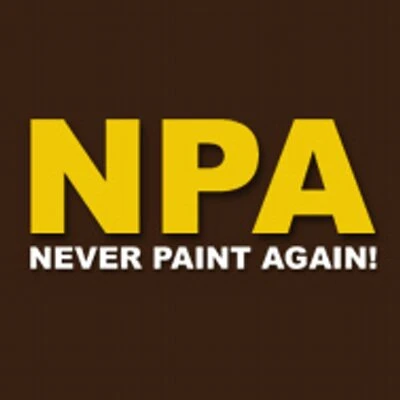If you’re a homeowner in the UK, you’ll know all too well how our unpredictable weather can take its toll on your property’s exterior. From the relentless drizzle of autumn to the frosty blasts of winter, your home’s exterior walls face a constant battle with the elements.
Paint peels, cracks appear, and the once-fresh look of your house starts to fade. It’s a familiar story, but the good news is that there’s a lot you can do to protect and improve your home’s exterior – and that’s where exterior wall coatings, house painting, and weatherproofing come in.
In this post, I’ll share everything I’ve learned about exterior house painting and durable wall coatings here in the UK. I’ll explain why it’s not just about “making it look nice” but about preventing damage, increasing longevity, and saving money in the long run.
Whether you’re weighing up the pros and cons of traditional painting or exploring modern wall coating systems, this guide will give you the answers you need.
Why Exterior House Painting Matters More in the UK Climate
The UK has one of the most changeable climates in the world. One week we have glorious sunshine, and the next, we’re dealing with driving rain and freezing winds.
Our homes bear the brunt of this, especially if they’re older properties with solid brick or rendered walls.
Exterior house painting isn’t just about curb appeal – it’s about protecting the fabric of your home. Left untreated, water ingress can lead to damp, mould, and structural issues that cost thousands to repair.
A properly applied paint or wall coating acts like a raincoat for your home – shielding it from water, frost, and UV damage while allowing the walls to breathe.
Paint vs. Exterior Wall Coatings – What’s the Difference?
Many homeowners ask me: “Is there really a difference between regular masonry paint and wall coatings?” The short answer is yes, and the difference is huge.
- Standard Masonry Paint:
- Masonry paint is widely available and affordable, but it tends to be thin and often requires repainting every 4–5 years, especially if your house is exposed to the elements. It looks good initially but doesn’t always provide long-term protection.
- Exterior Wall Coatings:
- These are thicker, more durable, and designed to last decades rather than just a few years. They’re not just paint – they’re advanced systems made from resin-based or flexible polymers that resist cracking, peeling, and fading. Think of them as a high-performance upgrade. Most professional coatings also have weatherproofing and self-cleaning properties, meaning they resist dirt, algae, and mould growth.
Analogy: If standard paint is like wearing a wool jumper on a rainy day, wall coatings are like wearing a high-tech waterproof jacket – they keep the weather out while letting your home “breathe.”
Common Exterior Problems and How Wall Coatings Help
Many homes, especially those built before the 1950s, have rendered or pebble-dashed walls. Over time, you might notice issues such as:
- Cracking and Flaking Paint – caused by moisture getting into the walls and freezing in winter.
- Discolouration and Staining – from algae or pollution.
- Render Cracks or Hollow Spots – as buildings naturally shift and settle.
- Efflorescence (White Powdery Marks) – a sign of trapped moisture.
A professional wall coating system can solve these issues because they’re applied as a multi-layer process, often starting with repair and preparation. Cracks and damaged render are fixed before the coating is applied.
This isn’t just a quick paint job – it’s more like a restoration project that strengthens your home’s exterior.
Weatherproofing Your Home – Why It’s a Smart Investment
If you’ve ever had damp creeping into your living room, you’ll know how destructive water ingress can be. Weatherproofing isn’t an optional extra in the UK – it’s a must. A good exterior wall coating can:
- Stop water from soaking into your walls.
- Reduce heat loss by improving surface insulation.
- Prevent algae and mould growth on exterior walls.
- Cut down on maintenance, saving you the hassle of repainting every few years.
Interesting fact: Many coatings are microporous.
This means they allow moisture inside the walls (from things like condensation) to escape, but they prevent rainwater from getting in. It’s a clever balance that keeps your walls dry and healthy.
Choosing the Right Finish – Paint, Render or Coating?
When it comes to the look of your home, you have several options:
- Repainting:
- If your walls are in good condition and you’re happy to repaint every 5–7 years, a high-quality masonry paint is fine.
- Rendering:
- If the surface is badly damaged or uneven, a new render may be needed before painting or coating. Rendering provides a smooth, fresh base but does require painting or sealing afterwards.
- Durable Wall Coatings:
- These combine the best of both worlds – they repair, protect, and provide a long-lasting decorative finish. They’re ideal for homeowners who want minimal upkeep and maximum protection.
DIY or Professional Application?
While I’m all for DIY projects, exterior wall coatings are not something I’d recommend tackling yourself. Unlike regular paint, coatings require specialist spray equipment and preparation techniques to ensure proper adhesion and performance. If applied incorrectly, they simply won’t last.
For traditional painting, DIY is possible, but remember that the biggest factor in how long your paint lasts is surface preparation. Clean the walls thoroughly, fix any cracks, and use a primer if necessary. Skipping these steps is like building a house without foundations.
The Hidden Costs of Neglecting Your Exterior
It’s tempting to put off exterior maintenance – especially when it’s not something you see every day – but the longer you leave it, the bigger the problems (and costs) become.
Cracked render can let water seep in, leading to damp walls, rotting timbers, and even structural damage. What could have been a straightforward paint or coating job turns into a costly repair project.
Think of wall painting and coating as preventative healthcare for your home. A little investment now saves a lot of headaches later.
Tips for Maintaining Your Home’s Exterior
- Inspect your walls annually: Look for hairline cracks, flaking paint, or algae growth.
- Clean gutters and downpipes: Overflowing water can damage walls and cause staining.
- Keep vegetation under control: Ivy and climbing plants can damage render and paint.
- Repaint or refresh coatings when needed: Don’t let your walls deteriorate before taking action.
Frequently Asked Questions (FAQs)
1. How long do exterior wall coatings last?
High-quality coatings can last 20–30 years with minimal maintenance, far outlasting standard paint.
2. Can wall coatings be applied to pebbledash?
Yes, but the surface must be prepared properly. Most professional coatings can be applied to pebbledash, brick, render, and even older painted walls.
3. Will weatherproofing affect how my walls ‘breathe’?
No – modern coatings are designed to be breathable, meaning they prevent water from coming in while allowing internal moisture to escape.
Final Thoughts
Exterior wall coatings and house painting aren’t just about appearances – they’re about protecting your biggest investment from the UK’s unpredictable climate. Whether you opt for traditional masonry paint, rendering, or a long-life wall coating, the key is preparation and quality. Do it once, do it right, and you’ll enjoy peace of mind for years to come.
If you’re unsure where to start, take a walk around your property this weekend. Look at your walls with fresh eyes – are there cracks, discolouration, or flaking paint? If so, it might be time to consider a durable, weatherproof solution.
Ready to Take the Next Step?
Your home deserves the best protection you can give it. If you’re ready to explore exterior wall coatings or want advice tailored to your property, visit Never Paint Again for expert guidance. Investing a little time now could save you decades of repainting and repairs – and that’s something every homeowner can appreciate.
You can also call them free on 0800 970 4928


